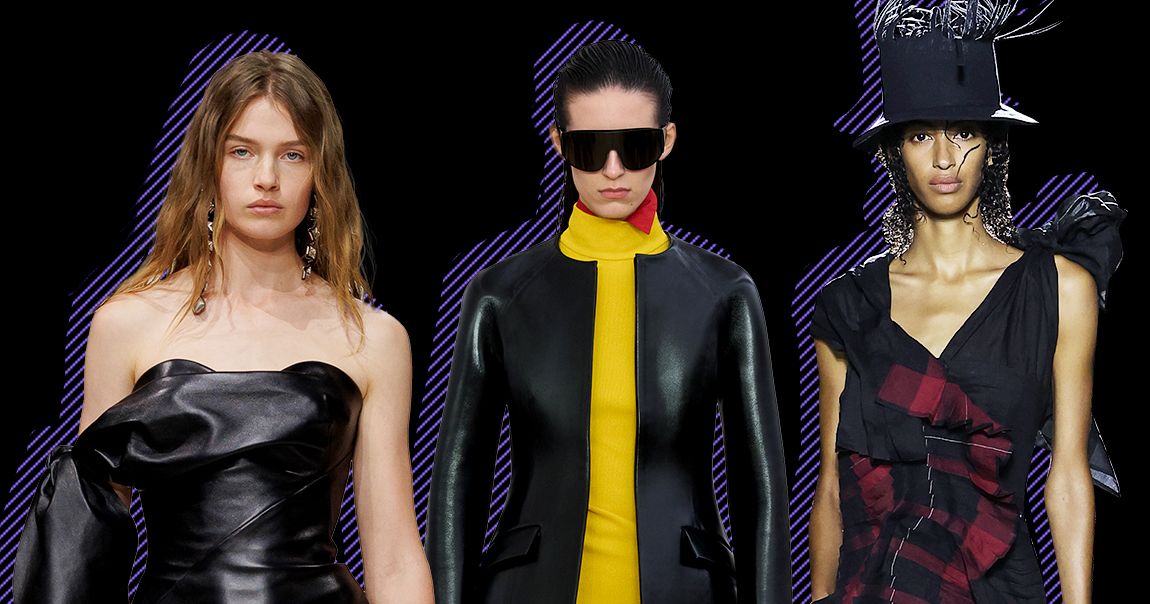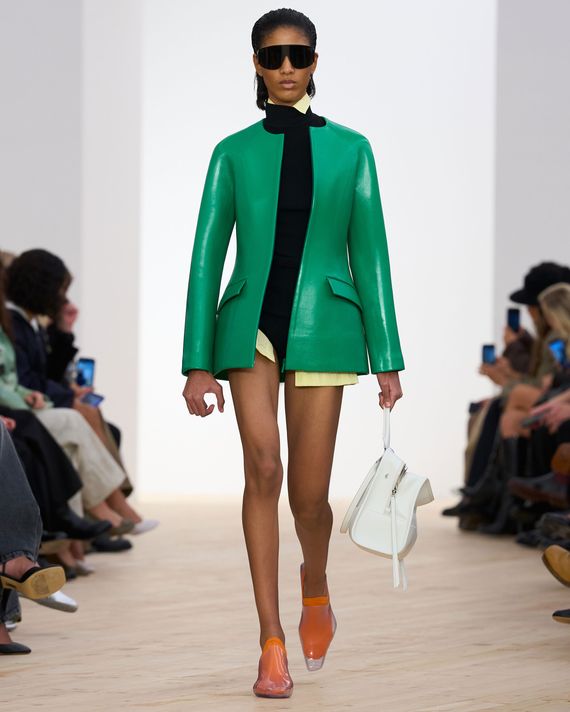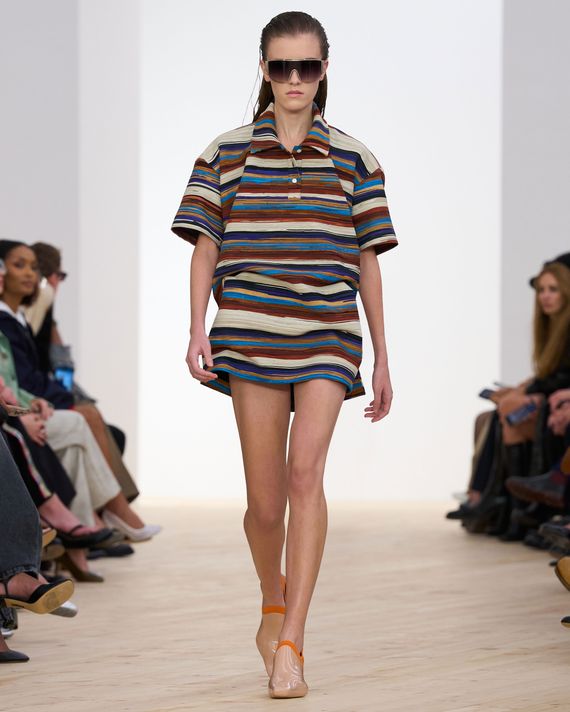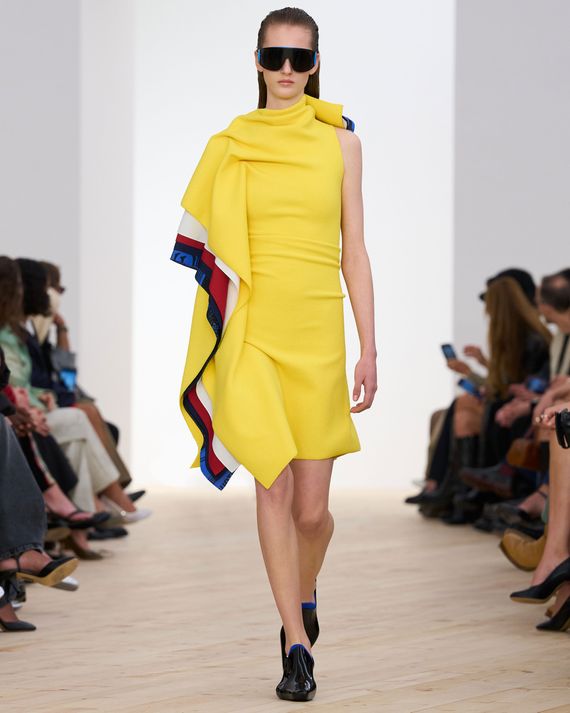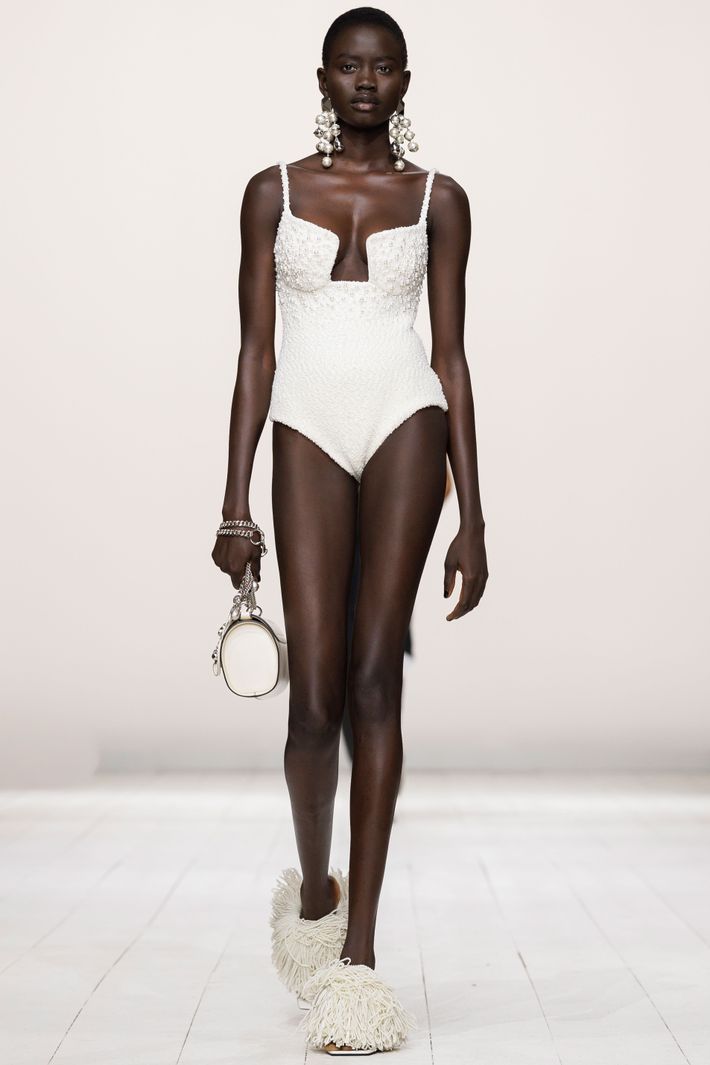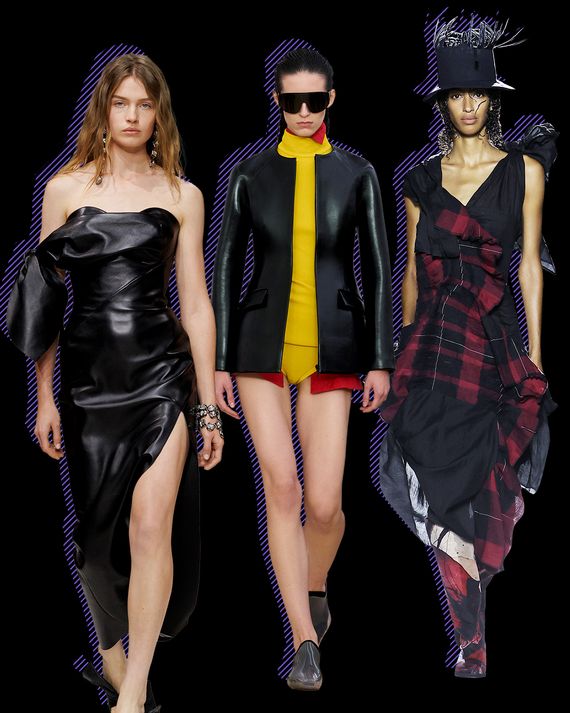
Photo-Illustration: by The Cut; Photos: IK ALDAMA/ Courtesy of Givenchy, Alessandro Lucioni / Gorunway.com/ Courtesy of Loewe, Monica Feudi/Courtesy of Yohji Yamamoto
Fashion people do love to gossip, and many assumed that Jack McCollough and Lazaro Hernandez would bring the style of Proenza Schouler, their New York label, to Loewe. Furthermore, it wouldn’t be as conceptual and bold as the brand was under Jonathan Anderson, especially in his late surrealistic phase.
It was great, then, to see Hernandez and McCollough disprove those people in their debut on Friday. Not only did the designers bring a sense of American sportswear to Loewe—a t-shirt and a pair of jeans, a crisp blouse—they also smoothed away some of the hard edges of Anderson’s Loewe, in fact they seemed to challenge the notion of how conceptual fashion needs to be.
Isn’t it much harder, and in a way more sincere, to design clothes that are wearable and also novel? To me, McCollough and Hernandez went further than a lot of designers in this big debut season: they laid the foundation of a universe based on clothing as well as accessories. And they did it in smart ways.
Those jeans? In various colors, including orange and off-white, they’re made of leather and shredded with a razor to give the texture of terrycloth. Loewe is a Spanish house, founded in Madrid in 1846, and one idea the designers wanted to convey was the sensuality of Spain in summer. Or, as Hernandez put it, “Fruit, flowers, water, sun, bodies.” The t-shirts are made of leather that was spun into the thinnest possible yarn and then knitted, along with wire, to create a rumpled effect. The designers were after a disheveled look, which is hardly exclusive to America. But, as McCollough said, “It’s a way of dressing that feels personal to us.”
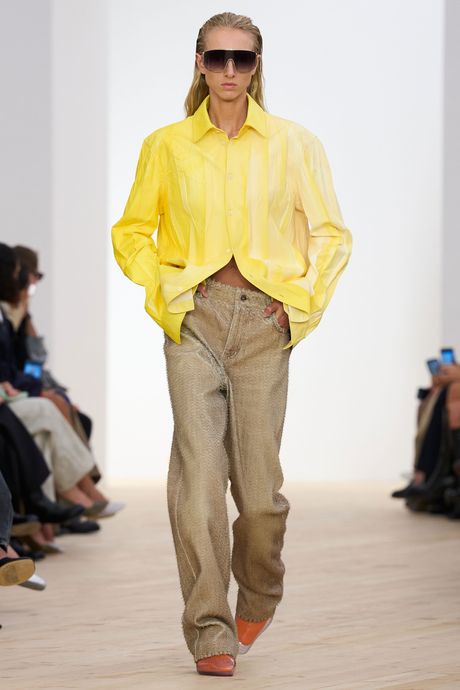
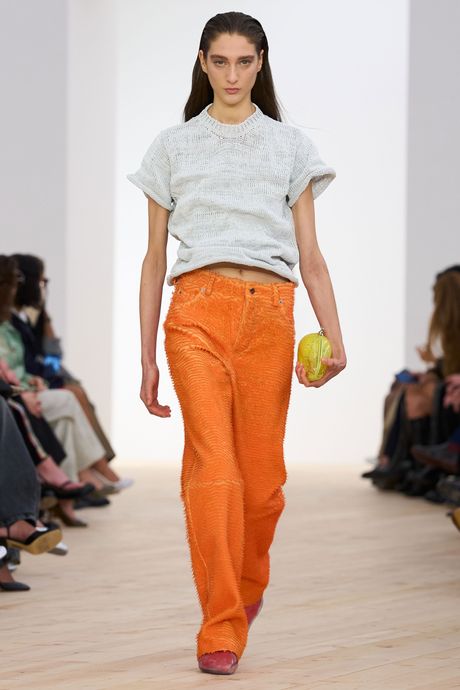
From left: Photo: Alessandro Lucioni / Gorunway.com/ Courtesy of LoewePhoto: Alessandro Lucioni / Gorunway.com/ Courtesy of Loewe
From top: Photo: Alessandro Lucioni / Gorunway.com/ Courtesy of LoewePhoto: Alessandro Lucioni / Gorunway.com/ Courtesy of Loewe
And the crisp, loose-fitting yellow blouse with creases? It’s also leather, dyed to evoke irregular fading caused by the sun.
McCollough and Hernandez put Loewe’s craft capabilities to use to make sporty, civilized clothes, which have been in remarkably short supply at the European shows. (The one other designer who took this lead, though with a different style, was Dario Vitale of Versace.) The collection also included molded leather jackets, their seams virtually invisible. The idea here, the designers said, was “to erase the traces of making.” That’s laudable, because in many collections this season the craft has been in your face, show-offy. Those molded jackets are lightweight and surprisingly supple.
Photo: Alessandro Lucioni / Gorunway.com/ Courtesy of Loewe
The designers also drew inspiration from American arts and crafts, notably the punchy, optimistic colors of the painter Ellsworth Kelly and the sculpture and furniture of Wendell Castle. There are one or two horizontally striped styles in the collection, including a polo mini dress, that may appear in photos to be knitted. Inspired by the cross-grain of stacked plywood, they are, in fact, uneven bands of leather cut for a similar striated effect.
Photo: Alessandro Lucioni / Gorunway.com/ Courtesy of Loewe
About the only thing in the collection that didn’t look resolved were casually draped dresses meant to suggest beach towels. Otherwise, McCollough and Hernandez did a superb job executing their simple concepts of Spanish sensuality and American ease, and introducing a new energy to Loewe.
Photo: Alessandro Lucioni / Gorunway.com/ Courtesy of Loewe
Backstage, they were mobbed by friends and family. I saw McCollough’s parents, who were kissing Hernandez, on the verge of tears. Although the designers twice showed their Proenza label in Paris, it’s a big deal to creatively lead a European brand and enter that stage. “I mean, we’ve been waiting for this our whole lives,” McCollough said.
One way, perhaps the best way, to look at Sarah Burton’s new collection for Givenchy, is to think of a woman alone with her lover.
Burton was intrigued by the book, “The Eye of Love,” featuring intimate portraits by Rene Groebli of his wife, apparently taken shortly after they were married. She’s sitting naked in an unmade bed; there’s another view of her neck and collar. Burton opened her show with models in bodysuits and then brought out a sculpted mini coat dress in black that exposed the model’s shoulders and the tiny, lace details of a black bra, followed by a mini dress in palest pink satin (a good interpretation of an Audrey Hepburn movie dress by Hubert de Givenchy).
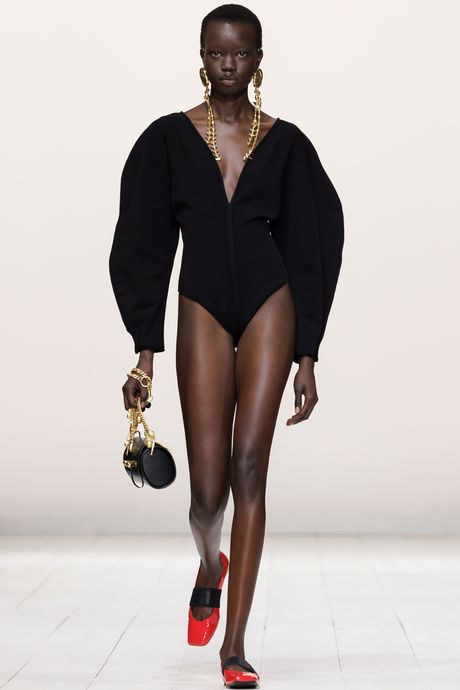
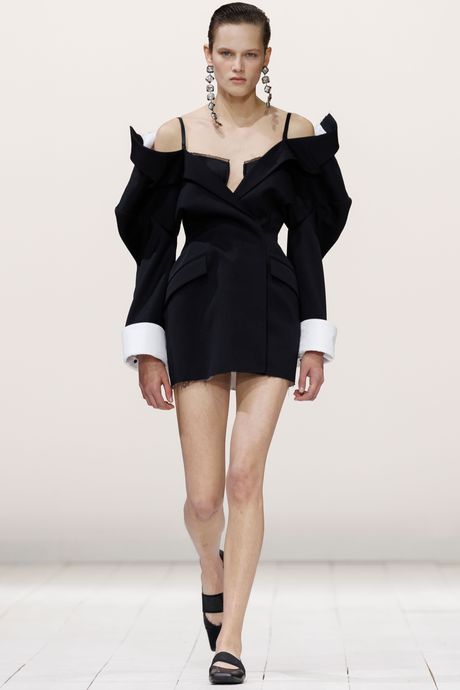
From left: Photo: IK ALDAMA/ Courtesy of GivenchyPhoto: IK ALDAMA/ Courtesy of Givenchy
From top: Photo: IK ALDAMA/ Courtesy of GivenchyPhoto: IK ALDAMA/ Courtesy of Givenchy
Then out came Eva Herzigova in a crisp white poplin shirt, its collar cut away from her neck, worn with a sarong-draped black wool skirt.
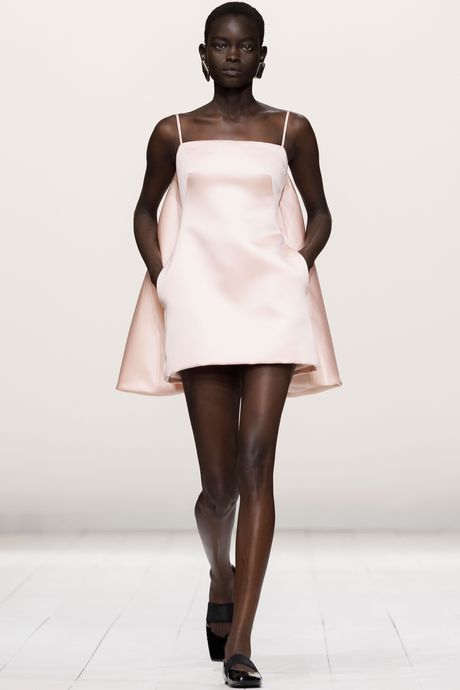
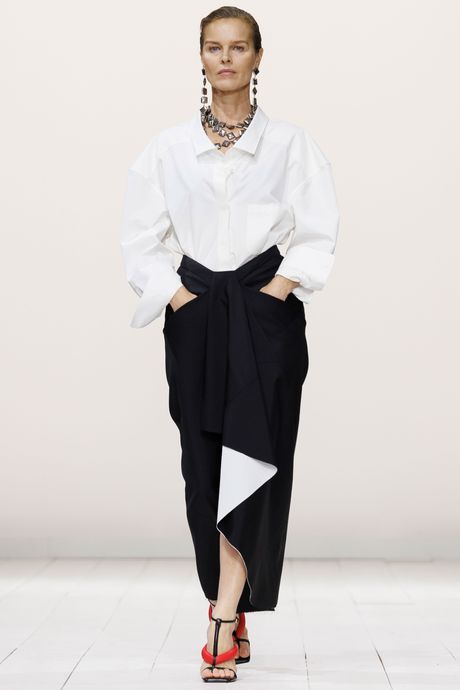
From left: Photo: IK ALDAMA/ Courtesy of GivenchyPhoto: IK ALDAMA/ Courtesy of Givenchy
From top: Photo: IK ALDAMA/ Courtesy of GivenchyPhoto: IK ALDAMA/ Courtesy of Givenchy
It was a clear and clever build up to the tailored segment of her show, and it included bathing suits worn with crystal and gold jewelry. (Burton says that in the 1950s Givenchy held a swimsuit show in New York.) Last spring, at her debut, Burton sent out suits and coats with exaggerated shoulders. This time, though, she pared everything back. “Women don’t want heavy,” she said. “And they kind of want to show their bodies.”
Photo: IK ALDAMA/ Courtesy of Givenchy
Among the best looks in the show were a strapless dress done in dark wool, with a soft, non-sugary bow at the top of one arm, and a number of suit coats with a slim skirt that was essentially split pants. Those styles just skim the body, and they’re still easy in attitude.
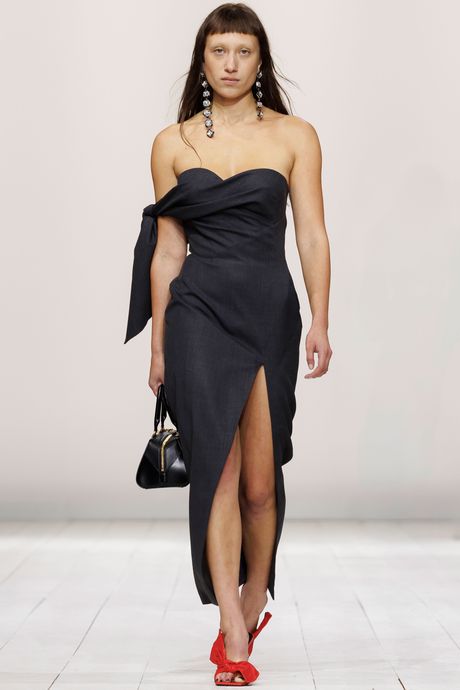
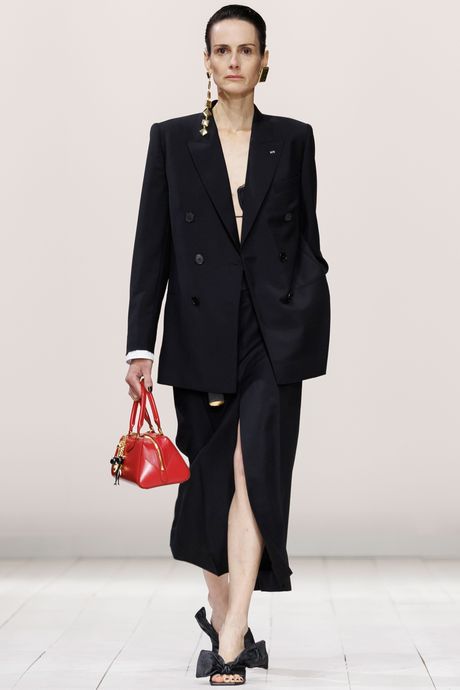
From left: Photo: IK ALDAMA/ Courtesy of GivenchyPhoto: IK ALDAMA/ Courtesy of Givenchy
From top: Photo: IK ALDAMA/ Courtesy of GivenchyPhoto: IK ALDAMA/ Courtesy of Givenchy
The collection included more of her stretch-net party dresses, with explosions of ruffles. Burton is just getting started at Givenchy, developing a confident look that works for different types of women—as the brand’s fall campaign, by Collier Schorr, showed. There’s the practical comfort of a wardrobe, but Burton can also afford to go out of her own comfort zone more. And perhaps she will.
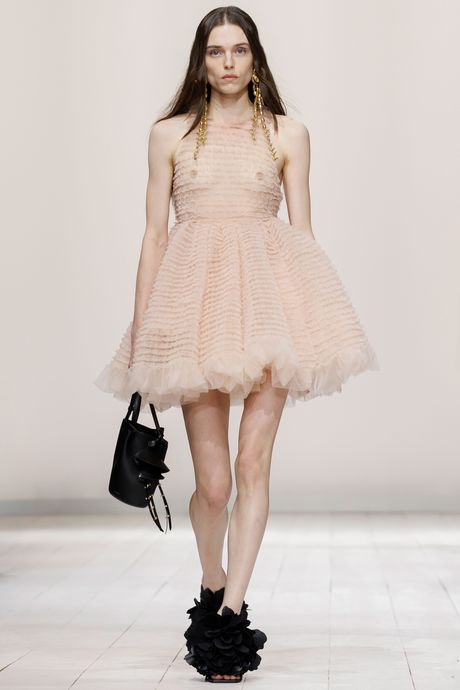
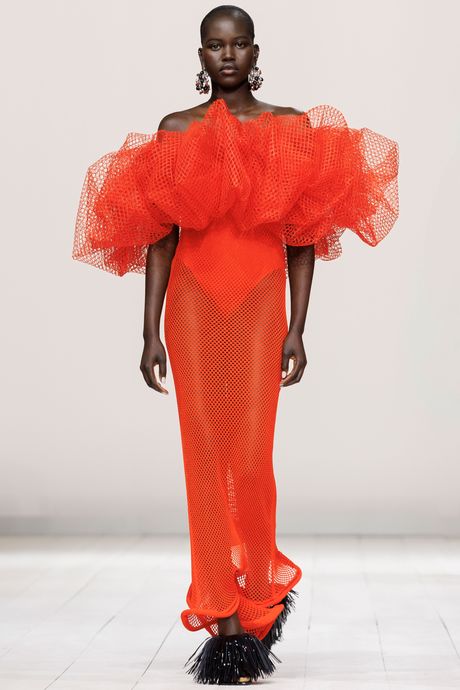
From left: Photo: IK ALDAMA/ Courtesy of GivenchyPhoto: IK ALDAMA/ Courtesy of Givenchy
From top: Photo: IK ALDAMA/ Courtesy of GivenchyPhoto: IK ALDAMA/ Courtesy of Givenchy
Yohji Yamamoto’s invitation was on multiple layers of rice paper, and the first black dresses on his plain catwalk, on a wet Friday night, featured white Japanese characters. Though he has long used his perspective to challenge the supremacy of Western dress, I can’t remember him using explicit Japanese symbols. Yamamoto is now 82, and quite spry. Inevitably, some of his clothes of late seem a meditation on his life and work, and the transference of ideas between Tokyo, where he lives, and Paris.
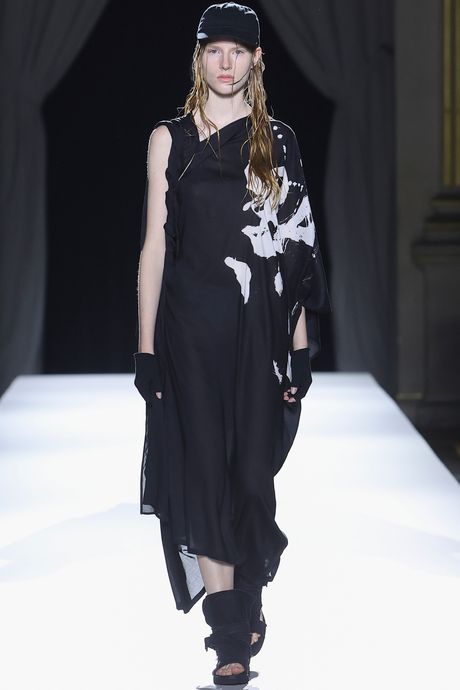
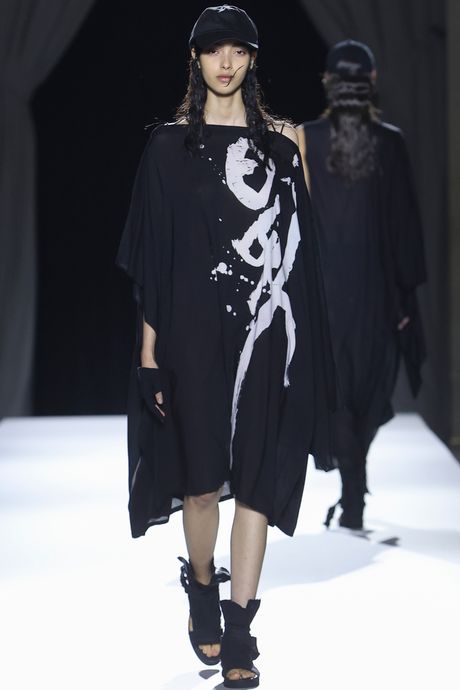
From left: Photo: Monica Feudi/Courtesy of Yohji YamamotoPhoto: Monica Feudi/Courtesy of Yohji Yamamoto
From top: Photo: Monica Feudi/Courtesy of Yohji YamamotoPhoto: Monica Feudi/Courtesy of Yohji Yamamoto
We, crammed into our wooden seats at Hotel de Ville, are the lucky observers of a vision that has always been personal, and now stands in stark contrast to the ultra-coherent “brand messages” that luxury companies strive for in order to sell stuff across many platforms to a distracted audience.
Yamamoto, by default, may be the last master of lyricism in dress. It has been big season of fringe but only Yamamoto would let a tailored black jacket or parts of a dress unravel unevenly in very fine threads. It’s almost an allegory of the fashion industry. And it’s also just a wonderfully inspiring way to be yourself.
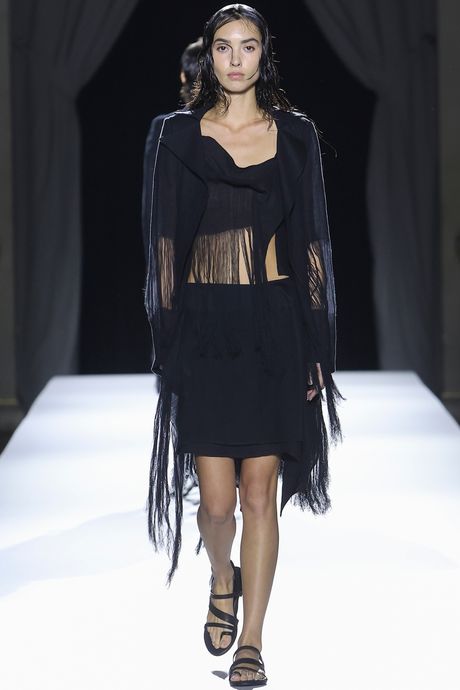
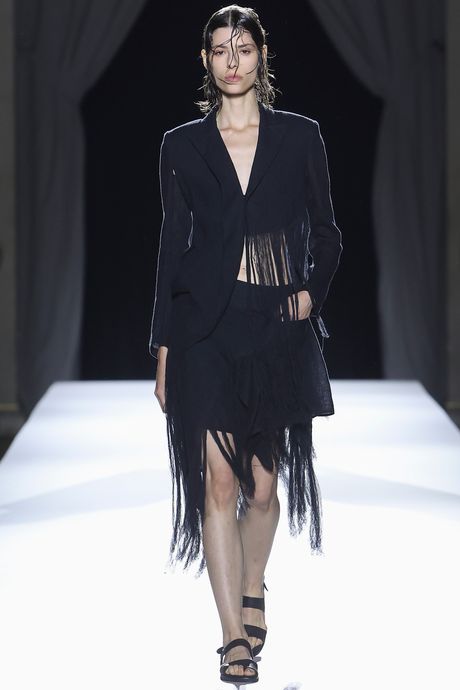
From left: Photo: Monica Feudi/Courtesy of Yohji YamamotoPhoto: Monica Feudi/Courtesy of Yohji Yamamoto
From top: Photo: Monica Feudi/Courtesy of Yohji YamamotoPhoto: Monica Feudi/Courtesy of Yohji Yamamoto
link

